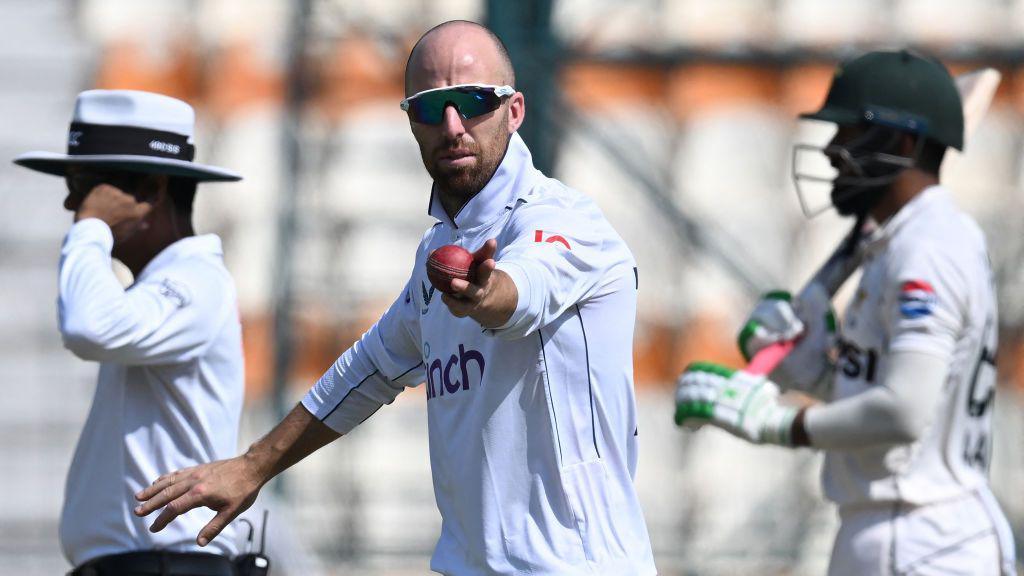Zaltzman's alternative stats from the madness of Multan

Joe Root and Harry Brook provided the headline stats - but what other quirks emerged from the first Test?
- Published
Few matches produce such a deluge of statistics as the first Test in Multan.
Records, numerical rarities, and startling curiosities cascaded from the scorebooks as England added another classic to their Bazball-era catalogue, with the type of victory that was almost inconceivable in previous eras.
The headline numbers have been plentifully chronicled already, so here are some other statistical nuggets from Multan...
Don't score 550 against England
Amid the Vesuvius of collective and individual feats, perhaps the most extraordinary fact to emerge was that England conceded more than 550 for the third time since Ben Stokes and Brendon McCullum took over at the start of the 2022 summer, and have won all three of those matches - against New Zealand at Trent Bridge in 2022, against Pakistan in Rawalpindi in 2022 and now in Multan.
Only once previously had England won after conceding more than 550 - the staggering first Test of the 1894-95 Ashes, when England conceded 586, were forced to follow on, and ended up winning by 10 runs, a match highly recommended to any England fans with access to a functioning time machine.
Before 2022, all teams conceding 550-plus in a Test innings had a collective record of won six, drawn 133, lost 193 and tied one.
Stokes set to play on same pitch as first Test
- Published13 October 2024
Anderson has 'urge' to extend playing career
- Published13 October 2024
Bazball turns 30
England have now played 30 matches since McCullum and Stokes took control. In those games, they have scored at 4.61 runs per over, an unprecedented rate in Test cricket.
To give some context to quite how extraordinary their approach has been, the previous fastest-scoring 30-Test sequence was achieved by the almost-all-conquering Australian team in the early 21st Century, who scored at 4.00 per over from August 2001 to December 2003.
England have scored fractionally more than one run per over quicker than the second-quickest-scoring Test team since 2022 - India, who have scored at 3.60 per over, but have been accelerating of late and will provide compelling opposition for Stokes' side next summer.
For further context, in the 30 Tests immediately before Stokes became full-time captain, England scored at 3.09 per over.
Prior to the Bazballian revolution, the fastest England had scored over 30 Tests was 3.58 per over - from May 2009 to August 2011, when Andrew Strauss' team ascended to number one in the ICC rankings.
In the 1950s - one of England’s most successful Test decades - they scored at 2.23 per over, and 2.18 across the three Ashes triumphs in 1953, 1954-55 and 1956.
England have won 20 and lost nine of their past 30 Tests - the joint-most wins they have achieved in a 30-match sequence since the late 19th Century, although with more defeats and without the landmark series victories against elite teams that Michael Vaughan's team secured while winning 20, and losing four, out of 30 games between 2003 and 2005.
Gritty Root
Joe Root again displayed his accumulative artistry, peerless precision and physical resilience in Multan.
He scored just 26% of his 262 runs in boundaries (17 fours).
Ball-by-ball data is not complete for all Test innings, but, of more than 400 double centuries for which the information is available, only one innings has contained a lower proportion of runs in boundaries - Grant Flower, who hit 10 fours and a six in his 201 not out for Zimbabwe against Pakistan in Harare in the 1994-95 season.
Leach loves second innings

Jack Leach was playing his first Test since January
Jack Leach's first innings figures of 3-160 do not reveal the valuable control he provided for much of the middle of the innings, but his second innings mop-up 4-30 compensated.
Leach has been consistently excellent for England in second innings, taking 74 wickets at an average of 24.2.
Of the 32 England spinners (full-time and part-time) of the last 50 years who have bowled in at least five second innings, none has a better average than the returning Somerset left-armer.
Crawley's conversion 'problem'
Zak Crawley reached 70 for the seventh time in his past 11 Tests, the first of which was his majestic 189 against Australia at Old Trafford last year.
Since then, Crawley has failed to convert any of those 70s into 80s.
There are worse problems to have as a Test opener, especially for a player who had made only five 70-plus scores in 37 previous Tests, but it must be a frustration, even if he has made consistently valuable contributions, and his rapid 70-odds frequently have a significant impact on the match and opposition.
In the history of Test cricket, there has only been one other instance of a player failing to convert more than four successive 70-plus innings into 80s - Alec Stewart fell in the 70s in six innings across a couple of years from 1992, a sequence he broke spectacularly by scoring centuries in both innings against a high-calibre West Indies attack to set up England's win in the 1994 Barbados Test.
And finally...
Saim Ayub and Abdullah Shafique have now opened the batting together eight times in Test cricket, and are yet to see the scoreboard tick over into double figures before the first wicket has fallen.
No other pair of top-order players has ever endured a run of more than six single-figure Test partnerships.
It was the fourth time in Test history that a team has been bowled out for 556, and Pakistan's defeat took the all-time record for Teams-Dismissed-For-556 to an unimpressive won one, lost three.
The stats thus suggest that, strategically, teams are better off being skittled for 75 (won two, lost two) or collapsing to 96 all out (won two, lost one, drew one, with a 100% win record since 2004), than piling up a once-impregnable 556. #YouCanProveAnythingWithStatistics